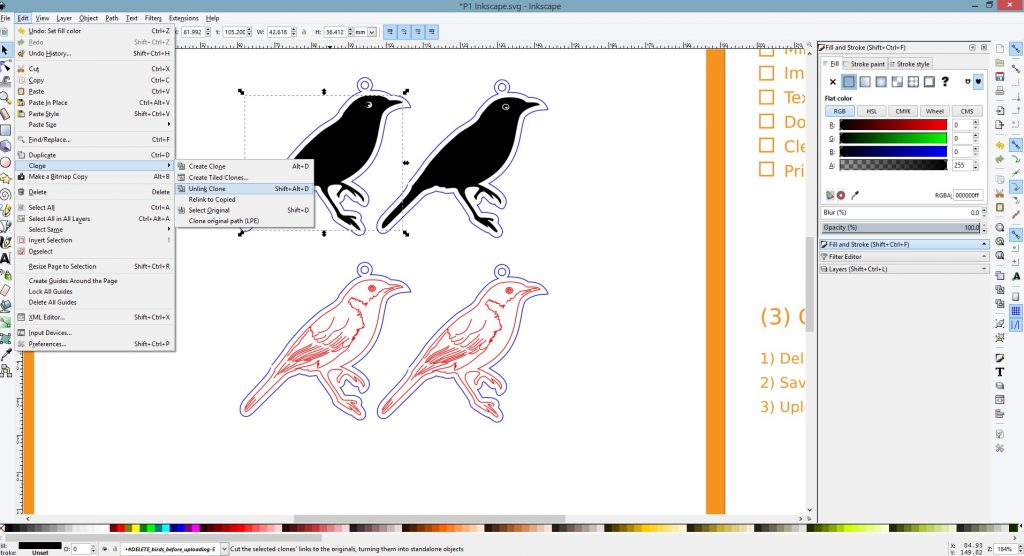


When you want a cut, you’ll create a path that has a stroke of some color and does not have a fill.
#USING INKSCAPE FOR LASER CUTTING FULL#
To cut, the laser moves slowly along a path at full power. In the middle, there’s a picture of a blank page – that’s where you’ll draw!.

If you don’t, go to the “View” Menu, click “Show/Hide,” and then select the “Palette.” If you don’t see these, you can click “View” in the menu, then “Show/Hide Dialogs.” On the right, there’s room for several dialog boxes.Near the top, you’ll see some boxes for adjusting the height and width of shapes.Along the left side in this picture, the tool menu offers the select tool, the circle tool, the pen (or Bezier) tool, and the text tool.It might look a little different, so find the items we’ve circled in red that we’ll use for this tutorial. You’ll see a screen with a lot of icons and menus. Once you’re done installing, go ahead and open Inkscape.
#USING INKSCAPE FOR LASER CUTTING HOW TO#
We’ve provided a little information about Inkscape and how to install it for those who aren’t familiar with it. Inkscape is a free professional quality vector graphics editor. Note that we can provide support for customers who are using either Inkscape or Adobe Illustrator. There are many vector graphics editors out there, but we’ll use Inkscape for this example because it’s free and available for both Mac and PC. Before printing, you can choose a light engrave setting for one and a dark setting for the other. You can assign different settings to each color.įor example, if you want one shape to be engraved lightly and another more deeply, fill each shape with a different color. You can then switch a stroke to a score.Įach color is a different step in the printing process. When you upload your file, strokes become cuts and fills become engraves. If you’re not familiar with vector design, it starts with two simple ideas: a stroke (which is an outline) and a fill (which is a filled-in shape).


 0 kommentar(er)
0 kommentar(er)
